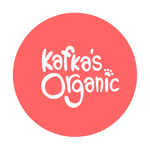Pet Allergies & Mislabeling of Ingredients in Pet Foods

Article by Sarah Fernando, PhD

A scientific article published early this year in the BMC Journal of Veterinary Research investigated the phenomenon of unlabeled ingredients in commercial pet food. They looked at a number of different pet foods and found that upto 83% of dry and wet commercial pet foods contained unlisted ingredients1. Even those formulas labeled as “novel” or “limited ingredient” contained additional unlisted components. A number of other published studies on the topic found similar evidence, going so far as to even find animal-sourced DNA in specialty pet food diets advertised as being vegan or vegetarian 2-5.
The authors of the BMC Veterinary Research study, Dr. Thierry Olivry and Dr. Ralph Mueller, concluded that:
“The mislabeling of pet foods appears rather common, even in those with “novel” or “limited” ingredients... Unexpected added ingredients are more frequently detected than those missing from the label. There is insufficient information to determine if the presence of a contaminating component will lead to a clinical reaction in a patient allergic to it, as challenges with the mislabeled foods were not performed in dogs or cats allergic to such ingredients.” 1
They further went on to say that the mislabeling of food might even be higher than they found, although the specific source of contamination (deliberate or accidental cross-contamination) could not be determined:
“..It is very likely that the rate of pet food mislabeling, either due to unlabeled or missing food ingredients, is higher than that reported herein. This underestimation stems from the methods used that, except for the last studies that used mass spectrometry, only looked for the presence or absence of a small number of specific ingredients. Secondly, these reports usually would not be able to determine if the mislabeling was due to the cross-contamination of the food supply or manufacturing lines or to a deliberate misleading intent (i.e. a deliberate fraud).” 1

What does all this mean for pet allergies?
Although additional unlisted ingredients can be harmful in any pet diet, depending on the ingredients, it’s especially dangerous for pets with allergies. This specific study didn’t go on to evaluate how each of these additional unlabeled components caused allergies in pets. However, in the face of incomplete ingredient listings, owners of pets with allergies face the difficult task of selecting foods that are safe for their pet. Here are 3 signs to watch out for when evaluating your pet food:
-
Check for additives
If pet foods need additives such as lecithins, guar gum, starches, binders, colourings, or synthetic vitamins/minerals, chances are that the diet is not high quality and may contain unlisted ingredients. The most common reason for additives in pet food is high processing by heat or extrusion which destroys nutrients naturally present in whole foods. Whenever possible, avoid these commercial diets for the long-term health and safety of your pet.
-
See how your pet’s coat and stool looks
If a food contains an unlisted ingredient that your pet is allergic to, your pet could respond with excessive loss of fur, a dull coat, and/or runny stool. Watch out for these signs in the first few days after introducing a new food.
-
Check for atopic dermatitis & runny nose

Photo credit: http://www.accoxford.com/dogs-can-have-allergies-too/
Atopic dermatitis (eczema) causes reddened skin, itchy skin and skin lesions from scratching in animals6. One of the causes of atopic dermatitis is food allergies. Be on the lookout if your pet seems to suddenly have itchy skin/redness after a change in diet, or even a new batch of the same diet.
What’s the solution?
Whenever possible, it’s best to feed a home-cooked diet made with organic ingredients, and it’s especially true for pets with allergies. With a self-prepared diet you can make sure the ingredients that go into each recipe are safe, and ensure no additives or preservatives are present. Another factor to look for when selecting pet foods is the use of human-grade ingredients. Often, pet foods use low quality ingredients that are not fit for human consumption, and therefore shouldn’t be fed to animals either.
References:
1 Olivry, T. & Mueller, R. S. Critically appraised topic on adverse food reactions of companion animals (5): discrepancies between ingredients and labeling in commercial pet foods. BMC Veterinary Research 14, 24, doi:10.1186/s12917-018-1346-y (2018).
2 Kanakubo, K., Fascetti, A. J. & Larsen, J. A. Determination of mammalian deoxyribonucleic acid (DNA) in commercial vegetarian and vegan diets for dogs and cats. Journal of animal physiology and animal nutrition 101, 70-74, doi:10.1111/jpn.12506 (2017).
3 Ricci, R. et al. Identification of undeclared sources of animal origin in canine dry foods used in dietary elimination trials. Journal of animal physiology and animal nutrition 97, 32-38, doi:10.1111/jpn.12045 (2013).
4 Horvath-Ungerboeck, C., Widmann, K. & Handl, S. Detection of DNA from undeclared animal species in commercial elimination diets for dogs using PCR. Veterinary dermatology 28, 373-e386, doi:10.1111/vde.12431 (2017).
5 Parr, J. M. & Remillard, R. L. Common Confounders of Dietary Elimination Trials Contain the Antigens Soy, Pork, and Beef. Journal of the American Animal Hospital Association 50, 298-304, doi:10.5326/jaaha-ms-6104 (2014).
6 Marsella, R. & De Benedetto, A. Atopic Dermatitis in Animals and People: An Update and Comparative Review. Veterinary sciences 4, doi:10.3390/vetsci4030037 (2017).



Leave a comment